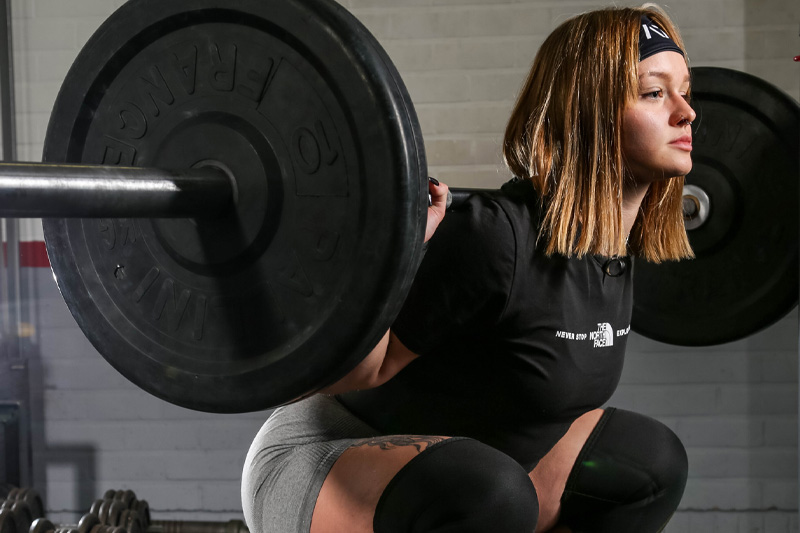Powerlifting, traditionally associated with raw strength and intense training, has seen a surge in popularity among women in recent years. This shift is not just about breaking stereotypes but also stems from the recognition of the numerous benefits it offers to women. In this exploration, we will delve into what powerlifting does to a woman’s body, addressing its advantages, safety considerations, and the right approach to powerlifting workouts for women.
The Empowerment of Powerlifting for Women:
- Strength and Muscle Development: Powerlifting comprises three main lifts – squat, bench press, and deadlift – all of which engage multiple muscle groups. Regular powerlifting builds significant strength, contributing to muscle development in the lower and upper body.
- Bone Health: The high-intensity, weight-bearing nature of powerlifting stimulates bone density, a crucial factor in preventing osteoporosis, especially as women age. Strengthening bones through powerlifting can enhance overall skeletal health.
- Metabolism Boost: Powerlifting involves compound movements that require a substantial amount of energy. This can lead to an increased metabolism, aiding in weight management and fat loss over time.
- Mental Resilience: Beyond physical benefits, powerlifting fosters mental toughness. Setting and achieving personal records, overcoming training challenges, and participating in competitions contribute to enhanced mental resilience.
- Body Positivity: Engaging in powerlifting often shifts the focus from aesthetics to performance. Women in powerlifting communities embrace their bodies for what they can do rather than how they look, promoting a positive body image.
Safety Considerations for Women in Powerlifting:
- Proper Technique: Emphasize the importance of learning and maintaining proper lifting techniques to avoid injuries. Working with a coach or seeking guidance from experienced lifters can be instrumental in ensuring correct form.
- Progressive Training: Start with manageable weights and progress gradually. Overloading the body too quickly can lead to injuries. A structured, progressive training program allows for steady strength gains while minimizing the risk of strains or sprains.
- Rest and Recovery: Adequate rest and recovery are crucial for any strength training program. Women, like men, should prioritize sleep, hydration, and nutrition to support muscle repair and overall well-being.
- Listening to Your Body: Pay attention to how your body responds to training. If there’s persistent pain or discomfort, it’s essential to address it promptly and, if necessary, seek guidance from a healthcare professional.
Approaching Powerlifting Workouts for Women:
- Set Realistic Goals: Establish achievable short-term and long-term goals. This not only provides motivation but also allows for a structured training approach.
- Balanced Programming: Incorporate a balanced program that includes not only the main powerlifting lifts but also accessory exercises to address weaker areas and prevent imbalances.
- Community Support: Joining a powerlifting community or finding a training partner can provide invaluable support and guidance. Sharing experiences and tips with other women in the sport fosters a sense of camaraderie.
- Celebrate Progress: Celebrate small victories and progress milestones. Recognizing achievements, no matter how minor, contributes to a positive mindset and long-term commitment to the sport.
Conclusion: Powerlifting has emerged as a transformative force for women, offering a path to physical strength, mental resilience, and body positivity. With proper education, attention to safety considerations, and a balanced approach to training, women can embark on a rewarding journey in powerlifting. The empowerment derived from pushing physical boundaries and achieving strength goals extends far beyond the gym, shaping a mindset of resilience and capability.

